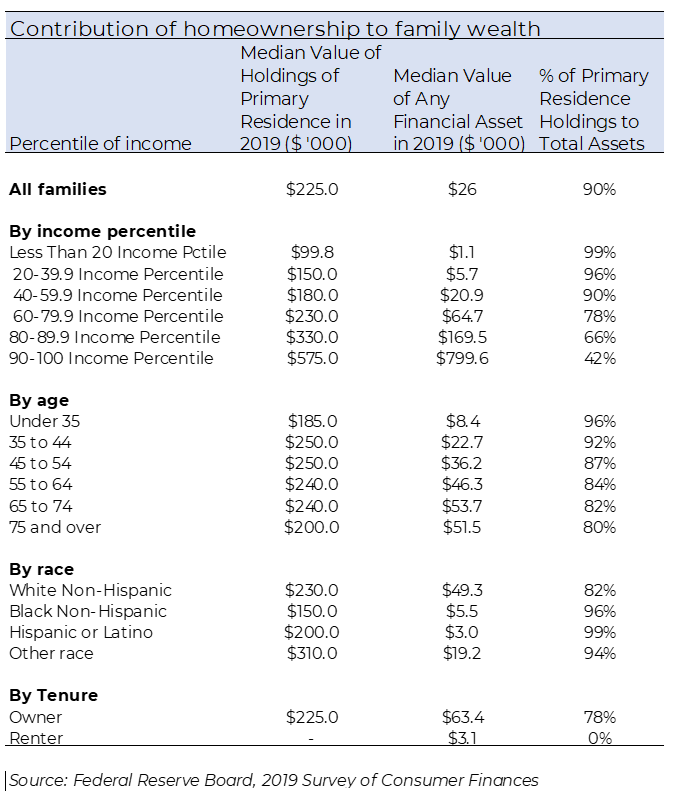Homeownership is the key pathway to building wealth and narrowing the racial income and wealth inequality gap. Among all families, the ownership of a primary residence typically accounts for 90% of total wealth.1
Housing wealth (equity) accumulation takes time and is built up by price appreciation and paying off the mortgage. While home prices can fall, they tend to recover and go up over a long-term period. Over a 30-year period, single-family existing home prices have gone by annually by 4%.
Homeowners typically move after 10 years. Homeowners who purchased a single-family existing-home 10 years ago at the median sales price of $170,567 with a 10% down payment loan and who sold the home at the median sales price of $315,700 in 2020 Q4 would have built up a home equity gain of $176,123. Over a 30-year period, the housing wealth (equity) gain is $307,979. Most of the wealth gain is from price appreciation, accounting for 82% of the wealth gain over a 10-year period.
Top Metro areas where homeowners typically accumulated the largest wealth from homeownership over a 10-year period (2010 Q4 – 2020 Q4)
- San Jose-Sunnyvale-Sta. Clara, California ($929,471)
- San Francisco-Oakland-Hayward, California ( $761,204)
- Anaheim-Sta. Ana-Irvine, California (509,806)
- Los Angeles-Long Beach-Glendale, California ($430,196)
- San Diego-Carlsbad, California ($427,896)
- Urban Honolulu, Hawaii ($412,986)
- Naples-Immokalee-Marco Island, Florida ($379,243)
- Seattle-Tacoma-Bellevue, Washington ( $374,526)
- Boulder, Colorado ($370,800)
- Reno, Nevada ($324,577)
Use this tool to view the wealth gains from homeownership over 5, 10, 15, and 30 years across 181 metro areas:
Contribution of Housing Wealth to Total Wealth by Income, Age, Race, and Tenure
Among all families, the ownership of primary residence typically accounts for 90% of total wealth and 78% among homeowners.2
Among those in the bottom 20% of the income percentile, the median value of holdings for a primary residence accounts for 99% of total family assets, and 42% for families in the top 10% of the income bracket.
By race, it accounts for at least 94% of the wealth of Hispanic (99%), Black (96%), or families of other races (94%).
Among families headed by a person 44 years old or younger, it accounts for over 90% of wealth.
Wealth accumulation takes time so the earlier households start owning homes, the greater the wealth accumulation. Down payment assistance programs can help renters transition in into homeownership because they may be able to afford the monthly payment but have little savings. The median financial asset of renters is $3,100 in 2019 dollars. Increasing housing supply will also temper the price appreciation that makes it more difficult to purchase a home in the first place.

Download the NAR Metro Area Housing Wealth Gains Report
1 NAR calculations from the Federal Reserve Board, Survey of Consumer Finances
2 Ibid








